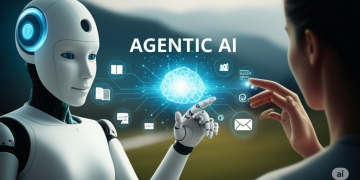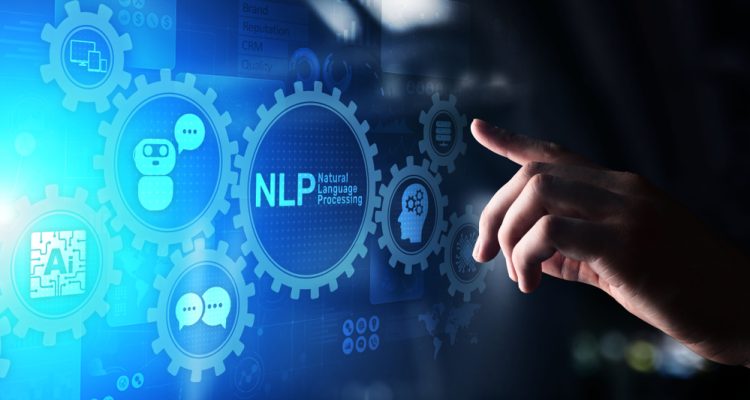Natural Language Processing (NLP) has become one of the most transformative areas within artificial intelligence, enabling machines to understand, interpret, and generate human language. NLP technologies are at the heart of many AI-driven applications, from chatbots and virtual assistants to advanced sentiment analysis and content generation tools. The capabilities of NLP are advancing rapidly, thanks to breakthroughs in deep learning, large language models, and more sophisticated algorithms that allow AI systems to understand the intricacies of human communication.
In 2025, NLP is evolving at an unprecedented pace. With the rise of more advanced AI systems, such as GPT-4 and other large-scale transformer models, natural language understanding (NLU), machine translation, and sentiment analysis are achieving new levels of sophistication. This article will explore the key advancements in NLP technologies, including language generation, sentiment analysis, and their implications for businesses and society.
The Evolution of NLP: From Rule-based to Data-driven Models
Historically, NLP technologies were built around rule-based systems. These systems relied on manually created rules and linguistic models to process language. While effective to some degree, these early approaches were limited in scope and scalability. The arrival of statistical models marked a significant shift in the field, allowing machines to learn from vast amounts of data rather than relying on pre-programmed rules.
The real breakthrough came with the advent of deep learning and neural networks, which enabled models to understand the nuances of human language more effectively. Today, the focus is on large transformer-based models that have revolutionized NLP tasks by learning from immense datasets and performing multiple language-related tasks with a single model.
Language Generation: The New Frontier of NLP
One of the most remarkable developments in NLP is the progress made in language generation. Language generation refers to the ability of AI to produce coherent and contextually relevant text based on a given input. In 2025, AI models are not only generating text that appears natural but are also capable of producing highly creative and contextually aware responses.
The key driver behind this progress is the evolution of transformer-based architectures, particularly GPT-4 and its successors, which have been trained on vast datasets containing millions of documents from diverse sources. These models can generate text that mimics human speech, with remarkable fluency and coherence. Some use cases of AI-driven language generation include:
- Content Creation: AI-powered tools are now capable of creating blog posts, news articles, and even novels. They can understand the style, tone, and intent behind a given prompt, producing articles or stories that align with specific requirements.
- Customer Support: AI-driven virtual assistants and chatbots have become significantly more adept at handling customer inquiries and generating responses that feel human-like. They are capable of providing personalized interactions and improving the overall customer experience.
- Translation and Localization: Machine translation has drastically improved with advanced language generation models. These systems can translate content with greater accuracy and adapt to regional dialects, idiomatic expressions, and cultural nuances, providing more contextually accurate translations.
- Creativity and Art: AI models are now being used to generate creative content, including poetry, music lyrics, and even advertising campaigns. The ability of AI to generate human-like text has led to significant advancements in creative industries, with AI serving as a collaborative tool for artists and marketers.
As AI continues to improve in language generation, it’s likely that we will see a shift from simply automating routine tasks to generating more complex and high-quality content that reflects human creativity.
Sentiment Analysis: Understanding Emotion in Text
Sentiment analysis is one of the most widely used applications of NLP in the business world. It involves analyzing text to determine the sentiment, or emotional tone, behind it. This technology is used extensively in social media monitoring, customer feedback analysis, and brand reputation management.
In 2025, sentiment analysis is becoming more advanced, thanks to developments in deep learning models that can better understand the subtleties of human emotion. Earlier versions of sentiment analysis models could detect basic emotions like positive, negative, and neutral, but the latest models can discern much more nuanced emotional states, including sarcasm, irony, and mixed feelings.
For example, sentiment analysis is now being used in:
- Customer Feedback: Businesses can now automatically process customer reviews, survey responses, and social media comments to determine overall satisfaction and pinpoint specific areas for improvement. AI models can not only detect if a review is positive or negative but can also understand the underlying sentiment behind certain phrases, such as frustration or excitement.
- Market Research: Companies are leveraging sentiment analysis to gauge public opinion on products, services, or even political events. By analyzing online discussions, news articles, and consumer sentiment, businesses can make more informed decisions about product launches, marketing strategies, and customer engagement.
- Social Media Monitoring: Sentiment analysis on social media platforms can provide real-time insights into public sentiment on various topics. AI systems can track and analyze trends, monitor brand mentions, and even detect potential PR crises before they escalate.
With the continuous refinement of NLP models, sentiment analysis tools are becoming more accurate and capable of understanding the complexities of human language, including context and emotion.
Improved Contextual Understanding with Transformers
One of the most important breakthroughs in NLP is the introduction of transformer models, which use attention mechanisms to focus on the most relevant parts of a text when making predictions or generating text. Unlike previous sequential models like RNNs and LSTMs, transformers can process entire sentences or paragraphs simultaneously, enabling them to understand context more effectively.
This capability has vastly improved several NLP tasks, including:
- Text Summarization: AI models are now able to generate concise and informative summaries of long documents, maintaining the essential context and meaning. This is particularly useful in fields like legal research, content curation, and news reporting.
- Question Answering (QA): AI models have become adept at answering complex questions based on large sets of documents. By analyzing the context and extracting relevant information, these models can provide answers that are more accurate and contextually aligned with the user’s query.
- Named Entity Recognition (NER): NER is the process of identifying and classifying entities in text, such as names of people, organizations, and locations. In 2025, NLP systems are better equipped to handle ambiguous or complex entities, making this task more accurate and useful for information extraction.
Transformers have also enabled advancements in zero-shot learning, where models can apply learned knowledge to new tasks without requiring retraining, and few-shot learning, where models can perform tasks with only a few examples.

AI for Multilingual NLP: Breaking Language Barriers
One of the most powerful developments in NLP is the ability to work with multiple languages seamlessly. As businesses and organizations operate on a global scale, the ability to translate and understand content across different languages is crucial. Advances in multilingual models like mBERT and XLM-R have made it possible for AI systems to process multiple languages simultaneously, eliminating the need for separate models for each language.
In 2025, AI-driven translation systems are achieving near-human-level translation accuracy, even for low-resource languages. These systems are not only capable of translating text accurately but also maintaining the cultural nuances, idiomatic expressions, and regional dialects that make communication more meaningful.
The rise of cross-lingual transfer learning allows models trained on one language to be applied to others, further enhancing the capability of multilingual NLP systems. This has immense potential in fields like global customer support, international marketing, and cross-cultural communication.
The Future of NLP: Ethical Considerations and Challenges
As AI continues to make strides in NLP, it’s crucial to address the ethical implications of these technologies. Issues related to bias, privacy, and transparency are becoming more prominent, especially as AI is used in decision-making processes such as hiring, law enforcement, and healthcare.
To address these concerns, researchers are working on developing more transparent and interpretable AI models, as well as ensuring that these models are trained on diverse and representative datasets. Additionally, there is an ongoing effort to mitigate bias in AI systems to ensure that NLP technologies do not perpetuate harmful stereotypes or discrimination.
Moreover, there is a growing focus on data privacy and security, particularly as AI systems process vast amounts of personal information. Ensuring that these systems respect user privacy while still providing valuable insights is a challenge that needs to be tackled moving forward.
Conclusion: The Transformative Power of NLP in 2025
Natural Language Processing is at the forefront of AI innovation, with advancements in language generation, sentiment analysis, multilingual processing, and context understanding transforming how we interact with machines. By 2025, NLP technologies will have become more sophisticated, making it easier for businesses and individuals to engage with AI systems in a natural, intuitive manner.
As AI continues to evolve, it will unlock new possibilities for automation, content creation, and decision-making across industries, from healthcare and finance to entertainment and customer service. However, the progress in NLP also comes with significant ethical and privacy challenges that must be addressed to ensure the responsible deployment of these technologies.
In the coming years, we can expect NLP to play an even more significant role in shaping the future of AI, making it more accessible, more intelligent, and more aligned with human needs and values.











































